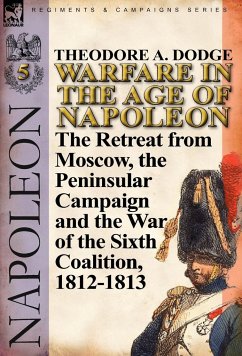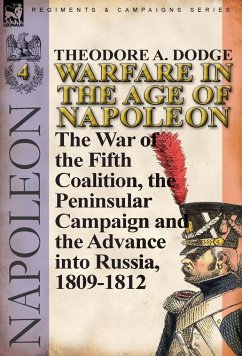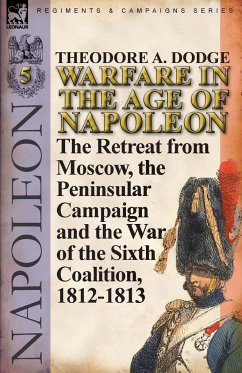
Warfare in the Age of Napoleon-Volume 2
The Egyptian and Syrian Campaigns & the Wars of the Second and Third Coalitions, 1798-1805
Versandkostenfrei!
Versandfertig in über 4 Wochen
34,99 €
inkl. MwSt.

PAYBACK Punkte
17 °P sammeln!
The second volume of a major work on warfare in the Napoleonic age The author of this substantial multi-volume history, Theodore A Dodge, was not only an historian of stature and note but also a soldier. He wrote several well regarded histories of the campaigns and battles of the Civil War and other works of military history. Perhaps his most outstanding achievement was a series of books, published under the umbrella title 'the Art of War,' focusing on different historical periods as typified by their most notable military commanders-including the campaigns of Alexander, Hannibal and Caesar in...
The second volume of a major work on warfare in the Napoleonic age The author of this substantial multi-volume history, Theodore A Dodge, was not only an historian of stature and note but also a soldier. He wrote several well regarded histories of the campaigns and battles of the Civil War and other works of military history. Perhaps his most outstanding achievement was a series of books, published under the umbrella title 'the Art of War,' focusing on different historical periods as typified by their most notable military commanders-including the campaigns of Alexander, Hannibal and Caesar in the ancient world and the wars of the 17th and 18th century as fought by great captains including Gustavus Adolphus, Frederick and Marlborough. This volume is part of his in depth study of the Napoleonic period, which in its entirety was comprised of four huge volumes that benefited from the inclusion of almost 800 small scale uniform drawings, portraits of notable personalities and numerous theatre, campaign and battlefield maps. This retitled Leonaur edition has been revised to form volumes of approximately equal size reformatted to enable us to enlarge all the illustrations and maps for the benefit of the reader. This series is an excellent history of the campaigns and battles of the Napoleonic Age but it goes far beyond the historical record. Dodge critically examines the strategies and tactics of all the military commanders in such a clear and authoritative manner that the student of military history can clearly understand the errors of those about to suffer defeat and the expertise-or in the case of Napoleon Bonaparte, the military genius-of the victors. This is an invaluable guide to warfare in the age of Napoleon and is highly recommended. This volume opens with a fascinating study of the French adventure in Egypt and Syria and is followed by the epic victory at Marengo against the Austrians and Moreau's campaign in Germany at the conclusion of the Revolutionary Wars; but the new Emperor of the First Empire was soon engaged upon the field of battle again, at Ulm where he delivered one of his most significant military victories. Leonaur editions are newly typeset and are not facsimiles; each title is available in softcover and hardback with dustjacket.












